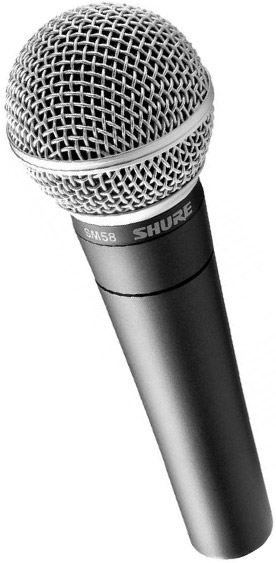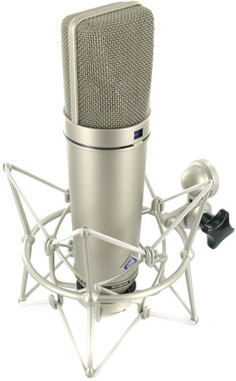There are different kinds of microphones? There sure are!
The two most widely used types of microphones are Dynamic Microphones and Condenser Microphones. Both types of mics basically do the same thing – they convert sound waves into electrical signal. However the way they accomplish this differs greatly. We won’t get too technical here, but because the technology inside Condenser Mics and Dynamic Mics are different, they sound different and they react different.
How do they sound different?
Condenser microphones are more sensitive. Because of this they respond quicker to transients and generally have a more detailed and accurate sound. 9 times out of 10 a condenser microphone will be used on vocals in a recording studio. (or other things that you want to hear very clear and full)
Dynamic microphones are not as sensitive as Condenser microphones and don’t response as fast. This is not necessarily a bad thing though! Many times a dynamic mic will sound smooth and pleasing on a sound source where a condenser mic may reveal too much. For example: When I am doing sound at a live event and have singers that I have not worked with before (and don’t know their voice), I always use a dynamic microphone. This is a safe choice and will sound good. I could strike gold by choosing a condenser mic that works well with the singer and sounds spectacular. But, I could also have a very bad combination where the microphone reveals harshness in the voice and sounds bad. Dynamic microphones are safer and can sound very pleasing!
Also, the sound from a Dynamic Microphone is generally not a wide as the sound from a Condenser Microphone. What I mean by that is, it generally doesn’t have as high highs or as low lows. Again, this is not a bad thing! On many sound sources you won’t want to pick up really low bass or really high treble. For example an electric guitar amp, a harmonica or a snare drum.
How do they react different?
Being the more sensitive type, the Condenser microphone acts very much like the human ear. When someone stands next to you and talks, you can hear them loud and clear. Let’s say that person continues to talk and takes a few steps away. The sound may become a little quieter, but you can still hear them fine. A condenser mic will pick-up the sound like your ears. This is good and bad. A condenser microphone will also hear everything around you (people talking or the loud drum kit 10 feet away from you). Even worse, if you are amplifying the mic signal and sending it out of speakers, the Condenser Microphone can very easily pick-up the sound that is coming out of the speakers and create feedback (a loop of the microphone picking up it’s own sound that’s coming out of the speaker)
Dynamic Microphones are less sensitive. The sound source generally needs to be less than 2 feet away from the microphone in order to pick up the sound well. (Less than 1 foot is ideal) If you move the mic 15 feet away, the sound will be substantially quieter and almost impossible to work with. This can be a great thing though! That means the background sounds will be comparatively non-existent with a dynamic mic. For this reason, most radio announcers use dynamic mics. (Ex: Sennheiser 421, EV RE20, Shure SM7B) In a live band setting, having the background noise not coming through the dynamic microphone is a huge plus. As well, dynamic microphones have substantially less chance of feeding back. Dynamic mics are much more common for live singers for all of these reasons.
If you’re in a recording studio, you are in an environment that is sound proofed and acoustically treated. You generally don’t need to worry about background sound, especially when recording one thing at a time. A condenser mic will
pick-up everything. Unlike in a live setting, this is a very good thing.
Other Differences:
- A Condenser Microphone requires phantom power in order to work.This is normally supplied from your soundboard (or preamp in the studio) and runs into the microphone through the mic cable. Some Condenser microphones are powered by batteries that you can insert into them.
- A dynamic microphone does not require power to use.
- Condenser Microphones are much more delicate. A bad fall can end the life of a condenser mic.
- Dynamic Microphones are generally very durable and can handle countless falls on the ground and keep ticking!
Condenser Mics and Dynamic Mics are both great for different things!





I have never looked within Sennheisers not to mention am needing new earphones.